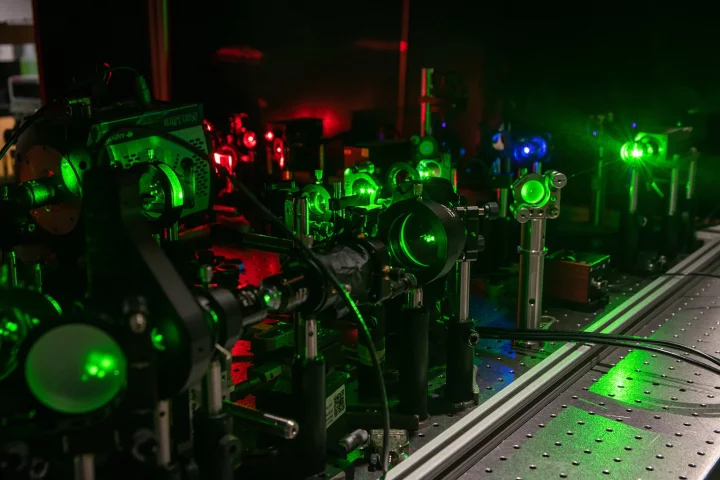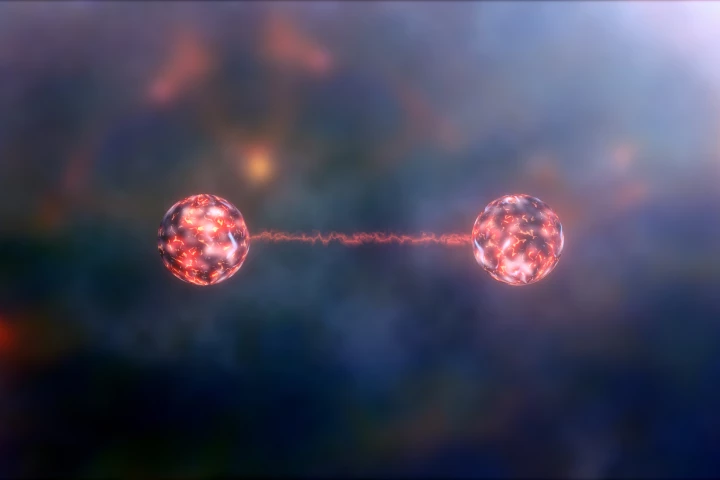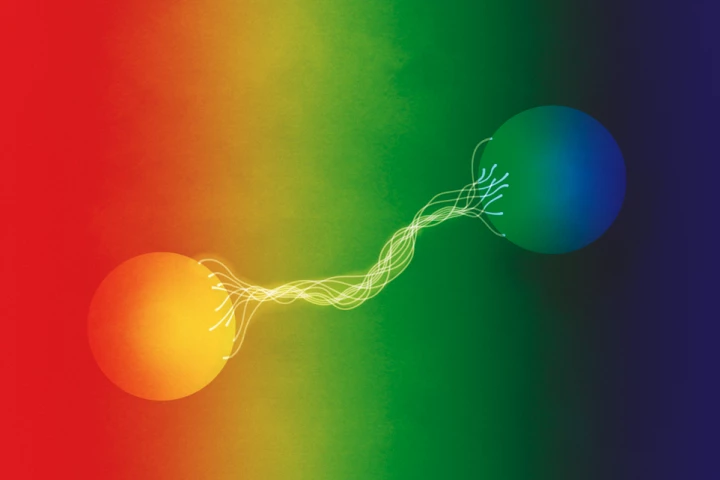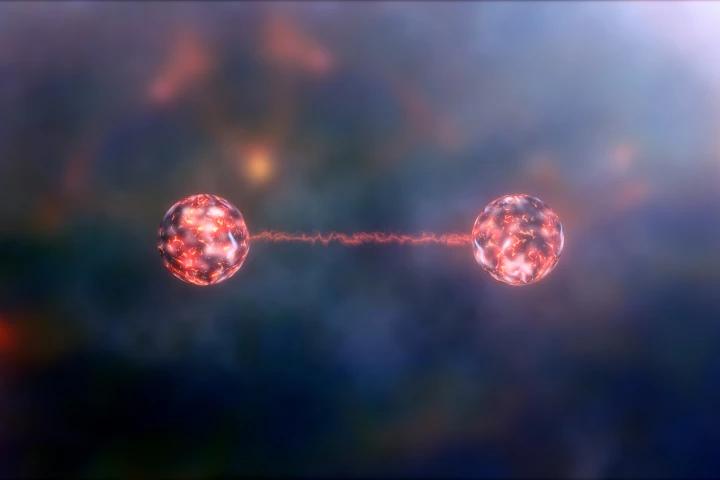Entanglement
-
Caltech scientists have created a quantum microscope that taps into the quirky quantum rules to see tiny details much more clearly. Using pairs of entangled photons allows the instrument to double the resolution of images without damaging the sample.
-
Physicists at Brookhaven National Laboratory have discovered a completely new type of quantum entanglement, the spooky phenomenon that binds particles across any distance. This allowed scientists to peer inside nuclei in more detail than ever before.
-
Scientists have demonstrated a technique to allow quantum computers to store more information in photons of light. The team encoded eight levels of data into photons and read it back easily, representing an exponential leap over previous systems.
-
The 2022 Nobel Prize in Physics has been awarded to three scientists, Alain Aspect, John F. Clauser and Anton Zeilinger, who all conducted some of the first experiments with entangled photons, enabling a future for commercial quantum computers.
-
Scientists have developed a way to produce a web of quantum entangled photons using a far more simple setup than usual. The key is a precisely patterned surface 100 times thinner than paper, which could replace a roomful of optical equipment.
-
University of Oxford physicists have linked two atomic clocks through quantum entanglement for the first time. The feat can help make these clocks so precise that they begin to approach the fundamental limit of precision set by quantum mechanics.
-
Physicists at the Max Planck Institute have developed an efficient new method to drive the quantum entanglement of photons, and demonstrated it by entangling a record number of photons. The technique could be a boon for quantum computers.
-
Researchers in Germany have demonstrated quantum entanglement of two atoms separated by 33 km (20.5 miles) of fiber optics. This is a record distance for this kind of communication and marks a breakthrough towards a fast and secure quantum internet.
-
Quantum computers are so far held back by their complexity. Engineers at Stanford have now demonstrated a new relatively simple design for a quantum computer where a single atom is entangled with a series of photons to process and store information.
-
Quantum computers could one day outperform traditional machines, but hurdles remain. Now physicists have successfully entangled three silicon quantum dots for the first time, in a breakthrough that could help make quantum computers more practical.
-
Atomic clocks are our most precise timekeepers, with the best ones keeping time to within one second in 15 billion years. But there’s always room for improvement, as researchers at MIT have now demonstrated with a new quantum-entangled atomic clock.
-
Engineers at Brookhaven National Laboratory have designed a strange new X-ray microscope that takes advantage of the spooky world of quantum physics to “ghost image” biomolecules in high resolution but at a lower radiation dose.
Load More










